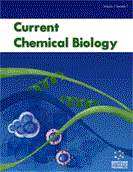Abstract
Aims: This paper is intended to identify 5-methylcytosine sites in human promoters.
Background: Aberrant DNA methylation patterns are often associated with tumor development. Moreover, hypermethylation inhibits the expression of tumor suppressor genes, and hypomethylation stimulates the expression of certain oncogenes. Most DNA methylation occurs on the CpGisland of the gene promoter region.
Objective: Therefore, a comprehensive assessment of methylation status of the promoter region of human gene is extremely important for understanding cancer pathogenesis and the function of posttranscriptional modification.
Methods: This paper constructed three human promoter methylation datasets, which comprise of a total of 3 million sample sequences of small cell lung cancer, non-small cell lung cancer, and hepatocellular carcinoma from the Cancer Cell Line Encyclopedia (CCLE) database. Frequency-based One-Hot Encoding was used to encode the sample sequence, and an innovative stacking-based ensemble deep learning classifier was applied to establish the m5C-HPromoter predictor.
Results: Taking the average of 10 times of 5-fold cross-validation, m5C-HPromoter obtained a good result in terms of Accuracy (Acc)=0.9270, Matthew's correlation coefficient(MCC)=0.7234, Sensitivity( Sn)=0.9123, and Specificity(Sp)=0.9290.
Conclusion: Numerical experiments showed that the proposed m5C-HPromoter has greatly improved the prediction performance compared to the existing iPromoter-5mC predictor. The primary reason is that frequency-based One-Hot encoding solves the too-long and sparse features problems of One-Hot encoding and effectively reflects the sequence feature of DNA sequences. The second reason is that the combination of upsampling and downsampling has achieved great success in solving the imbalance problem. The third reason is the stacking-based ensemble deep learning model that overcomes the shortcomings of various models and has the strengths of various models. The user-friendly web-server m5C-HPromoter is freely accessible to the public at the website: http://121.36.221.79/m5C-HPromoter or http://bioinfo.jcu.edu.cn/m5C-HPromoter, and the predictor program has been uploaded from the website: https://github.com/liujin66/m5C-HPromoter.
Keywords: 5-methylcytosine, human promoters, frequency-based One-Hot encoding, deep neural network, ensemble deep learning, DNA methylation.
[http://dx.doi.org/10.1038/nrg3230] [PMID: 22641018]
[http://dx.doi.org/10.1038/nrc1432] [PMID: 15343277]
[http://dx.doi.org/10.1056/NEJMra023075] [PMID: 14627790]
[http://dx.doi.org/10.1038/s41586-019-1186-3] [PMID: 31068700]
[http://dx.doi.org/10.1039/C6MB00471G] [PMID: 27531244]
[http://dx.doi.org/10.1016/j.ab.2018.03.027] [PMID: 29649472]
[http://dx.doi.org/10.18632/oncotarget.17104] [PMID: 28476023]
[http://dx.doi.org/10.1016/j.omtn.2019.10.008] [PMID: 31726390]
[http://dx.doi.org/10.1007/s11704-018-8094-9]
[http://dx.doi.org/10.1186/s12859-020-03828-4] [PMID: 33126851]
[http://dx.doi.org/10.1016/j.omtn.2020.06.004] [PMID: 32645685]
[http://dx.doi.org/10.1016/j.febslet.2005.07.002] [PMID: 16051225]
[http://dx.doi.org/10.1093/bib/bbz048] [PMID: 31157855]
[http://dx.doi.org/10.1186/s13059-017-1189-z] [PMID: 28395661]
[http://dx.doi.org/10.3389/fcell.2020.00614] [PMID: 32850787]
[http://dx.doi.org/10.1038/s42256-020-0217-y]
[http://dx.doi.org/10.1007/3-540-45014-9_1]
[http://dx.doi.org/10.1016/S0893-6080(05)80023-1]
[http://dx.doi.org/10.1007/978-3-642-27733-7_299-3]
[http://dx.doi.org/10.1145/2939672.2939785]
[http://dx.doi.org/10.1007/s10994-010-5221-8]
[http://dx.doi.org/10.1023/B:APIN.0000033632.42843.17]
[http://dx.doi.org/10.1016/j.patcog.2017.07.024]
[http://dx.doi.org/10.3389/fcell.2020.623858] [PMID: 33598456]
[http://dx.doi.org/10.1613/jair.953]
[http://dx.doi.org/10.1093/bib/bbz041] [PMID: 31067315]
[http://dx.doi.org/10.18632/oncotarget.9057] [PMID: 27147572]
[http://dx.doi.org/10.1109/21.97458]
[http://dx.doi.org/10.1214/aos/1013203451]
[http://dx.doi.org/10.1016/j.ymeth.2021.12.004]
[http://dx.doi.org/10.1021/acs.jproteome.1c00848] [PMID: 34812044]
[http://dx.doi.org/10.1109/TCBB.2019.2932416]
[http://dx.doi.org/10.1016/j.ab.2019.03.017] [PMID: 30930199]






























